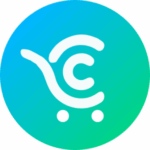Introduction
As the global eLearning landscape accelerates into 2025, organizations must navigate a rapidly evolving market filled with new opportunities and technological advancements. The demand for effective Learning Management Systems (LMS) continues to grow, driven by innovations in AI, mobile learning, and personalized education. Understanding these trends is essential for selecting the right platform that supports continuous learning, boosts engagement, and aligns with strategic goals.
This article explores the future of the eLearning platform market, evaluates Flipick and its top alternatives, and provides guidance on choosing the optimal LMS for organizational success.
Understanding Flipick and Its Market Position
Flipick is a cloud-based LMS designed to serve educational institutions, corporate training providers, and e-learning enterprises. It emphasizes user-friendliness, flexibility, and scalability, making it suitable for diverse organizational needs in 2025. The platform supports multiple content formats such as videos, PDFs, quizzes, and interactive modules, facilitating engaging digital learning experiences.
Flipick’s features include an intuitive interface, assessment tools with automated certificates, multilingual support, and seamless integrations with ERP and third-party applications. Its advantages lie in affordability, customization options, and comprehensive analytics, which enable organizations to track learner progress effectively.
However, limitations include limited offline access, some constraints in advanced personalization, and initial configuration challenges with complex integrations. Still, Flipick remains a relevant choice, especially for organizations seeking a versatile, cost-effective LMS aligned with current digital education trends.
Top 10 Flipick Alternatives & Competitors in 2025
As the LMS market expands, numerous platforms offer competitive features tailored for different organizational needs. The leading 10 alternatives include:
- Moodle: Open-source, highly customizable, supported by a vast community.
- Canvas: Modern interface with strong academic and corporate integrations.
- TalentLMS: Cloud-based, user-friendly, with gamification and assessment tools.
- Docebo: AI-powered, scalable, with automated features and social learning.
- Blackboard Learn: Established in education, offering comprehensive tools and controls.
- Schoology: Combines LMS with social learning for enhanced engagement.
- Absorb LMS: Sleek design, mobile compatibility, and automation for corporate training.
- SAP Litmos: Extensive content libraries, compliance features, and analytics.
- iSpring Learn: Integrates with PowerPoint, ideal for rapid course development.
- Paradiso LMS: Fully customizable with robust integrations, ideal for scalable, branded training solutions.
These platforms are distinguished by their adaptability, ease of use, and technological integrations, making them suitable choices for diverse organizational sizes and industries.
Comparing Features and Pricing of Top Alternatives
When selecting an LMS, comparing core features—such as customization, integrations, analytics, user engagement, and cost—is crucial. Here’s a brief comparison:
- Customization: Platforms like Moodle and Docebo offer extensive customization; others like TalentLMS provide simple drag-and-drop tools.
- Integration: Most top platforms connect with HRIS, CRM, and video conferencing tools through APIs, with strong support for third-party apps.
- Analytics & Reporting: Advanced platforms like Paradiso LMS and Canvas provide real-time dashboards and detailed insights.
- User Engagement: Features like gamification, badges, social learning, and mobile access enhance participation across solutions.
- Pricing: Open-source options (e.g., Moodle) have low upfront costs but may incur maintenance; SaaS models (e.g., TalentLMS) offer predictable subscription fees scaled by users.
Carefully evaluating these factors ensures the chosen LMS aligns with budget, technical infrastructure, and learner needs.
Paradiso LMS — The Ultimate Flipick Alternative
Paradiso LMS stands out as a leading alternative in 2025, thanks to its comprehensive feature set and adaptability. It offers intuitive navigation, extensive customization, and a robust integration ecosystem supporting Salesforce, Zoom, and content standards like SCORM and xAPI.
Its key strengths include:
- Powerful analytics and real-time reporting for data-driven decisions
- Adaptive learning pathways personalized to individual learners
- Gamification elements such as badges and leaderboards to boost engagement
- Scalability suitable for both small teams and large enterprises
- API support for custom integrations and branding
Paradiso’s flexibility meets future needs, supporting immersive technologies like AR/VR and microlearning modules. Its proven success across industries underscores its position as a top choice for organizations aiming to innovate their digital learning strategies.
🚀 Ready to See Paradiso LMS in Action?
Let’s show you how Paradiso LMS can work for you.
Making the Right Choice
Selecting the ideal LMS requires a strategic approach:
- Conduct thorough needs assessments involving key stakeholders to identify skill gaps, content types, and integration requirements.
- Compare platforms based on ease of use, scalability, customization, analytics, and cost.
- Request demos and free trials to experience the platforms firsthand and assess usability within your environment.
- Engage your technical team and training staff during testing to evaluate implementation complexity and support features.
- Develop a phased implementation plan that includes staff training, change management, and data migration for seamless adoption.
A well-informed decision will empower your organization to leverage digital learning effectively. Platforms like Paradiso LMS provide tailored demos and trial periods, helping you select a solution that aligns perfectly with your organizational goals.
Conclusion
In conclusion, the LMS market in 2025 offers a variety of powerful platforms capable of transforming digital learning for organizations of all sizes. Whether opting for Flipick, Paradiso LMS, or another top contender, the key is to evaluate features, scalability, customization, and future readiness.
Emerging technologies such as AI, immersive reality, and microlearning are shaping the future of eLearning, making it essential to select a platform that not only meets current needs but also adapts to innovations.
By conducting a thorough needs analysis, comparing options systematically, and leveraging trial offerings, organizations can choose the most suitable LMS to foster growth, compliance, and engaged learning Journeys—from onboarding to continuous development. Ultimately, the right LMS can become a strategic asset in achieving long-term organizational success.

















